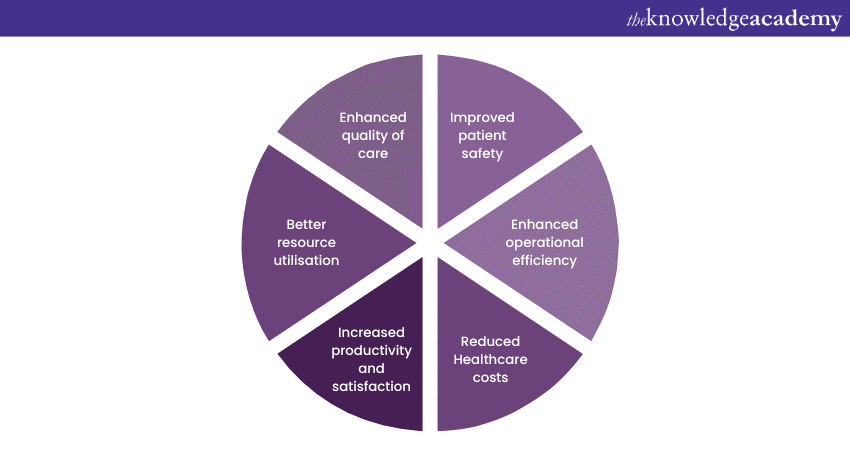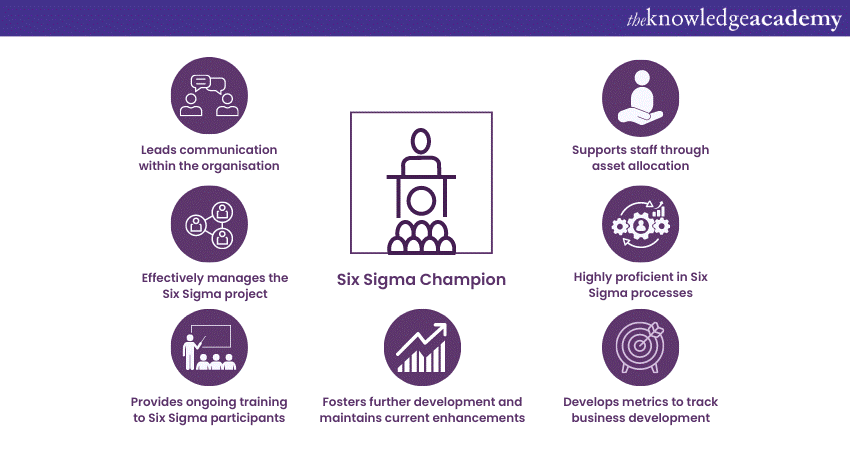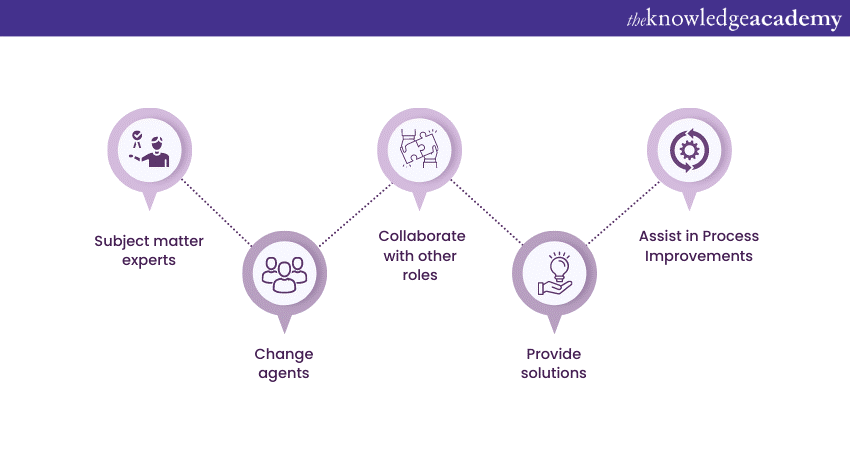We may not have the course you’re looking for. If you enquire or give us a call on 01344203999 and speak to our training experts, we may still be able to help with your training requirements.
Training Outcomes Within Your Budget!
We ensure quality, budget-alignment, and timely delivery by our expert instructors.

In an evolving healthcare sector, organisations often face the constant challenge of improving patient outcomes, optimising processes, and reducing costs. To address these critical areas, the application of Six Sigma in Healthcare has gained prominence.
The systematic approach of Six Sigma in Healthcare aims on improving care quality, patient safety, and operational efficiency within Healthcare organisations.
Now, within the Healthcare sector, Six Sigma is vital in enhancing care delivery, patient safety, and overall organisational performance. So, if you want to ensure the best performance for your organisation, it’s time to implement the Six Sigma methodology.
Not sure how to implement it and how can it benefit your organisation? Well, look no further. Read this blog to learn about the benefits of Six Sigma in Healthcare. Also, explore its various examples and the key roles involved in its implementation.
Table of Contents
1) What is Six Sigma in Healthcare?
2) Five steps for quality improvement in Six Sigma
3) The Affects of Six Sigma in Healthcare
4) Examples of Six Sigma in Healthcare
5) Benefits of implementing Six Sigma in Healthcare
6) What are the roles in Six Sigma Healthcare implementation?
7) Conclusion
What is Six Sigma in Healthcare?
Six Sigma, a methodology initially developed in the manufacturing industry, has also found wide-ranging applications in the Healthcare sector. The systematic approach of Six Sigma focuses on improving care quality, patient safety, and operational efficiency within Healthcare organisations.
In the context of Healthcare, Six Sigma recognises that small, incremental improvements across various processes can have a substantial impact on patient care and organisational performance.
Further more, using data-driven decision-making and process improvement techniques, Six Sigma offers a powerful framework to address challenges and enhance healthcare outcomes. The key principles of Six Sigma in Healthcare include the following:
a) Customer focus: Six Sigma in Healthcare emphasises the importance of meeting and understanding the needs of patients and other stakeholders involved in the process.
b) Data-driven decision-making: Six Sigma also relies on robust data collection and analysis to drive decision-making. Statistical tools and techniques are used to identify areas of improvement, measure performance, and monitor progress.
c) Process improvement: It also identifies and analyses key processes in Healthcare organisations. Therefore, it aims to streamline them, reduce variations, and eliminate errors. This further leads to enhanced efficiency, reduced costs, and improved patient outcomes.
d) Teamwork and collaboration: Six Sigma encourages multidisciplinary collaboration. It brings Healthcare professionals, administrators, and other stakeholders together to achieve common goals.

Five steps for quality improvement in Six Sigma
The Six Sigma approach can translate to measurable quality improvement, if organisations follow these five key steps, described as follows:
a) Define: The first step involves acquiring the clarity on who the patients are, and what they require. The capabilities of the process being measured also come into the picture, followed by the organisation’s objectives.
b) Measure: The second step entails the organisation’s vision of what its improvement journey will look like, and an analysis of what data will their efforts be focussed on and measured. The metrics used to define their performance in the Healthcare industry include their service level, patient satisfaction, service cost, and clinical excellence.
c) Analyse: The third step comprises of data collection and analysis using the necessary tools.
d) Improve: The fourth step involves the implementation of modifications to enhance the process.
e) Control: The fifth step is where the organisation monitors its performance to maintain their improvement.
The Affects of Six Sigma in Healthcare
Organisations have successfully adopted the Six Sigma methodology as a part of their efforts in quality improvement. Six Sigma approaches and tools have had a positive impact on the Healthcare industry. Here are the various examples of how Six Sigma has positively affected organisations in Healthcare:
1) Boston Medical Centre: The centre observed significant improvements through their focus on diagnostic imaging, which helped bring cost savings and an increase in revenue of over £1.7 million.
2) The Women and Infants Hospital of Rhode Island: Six Sigma was successfully implemented by this hospital for standardising its embryo transfer procedures. The standardisation resulted in an increase of its implementation rates by 35 percent.
3) Rapides Regional Medical Centre: The Rapides Regional Medical Centre reduced the defects in its emergency department by utilising the Six Sigma methodology. The implementation of the methodology resulted in a decline in wait times, increased patient numbers, and an annual savings of over £740,000 for the hospital.
4) Valley Baptist Health System: The hospital reduced its surgery cycle time by implementing the Six Sigma methodology, thereby adding sufficient capacity to handle over 1000 more cases annually. This increment in handling capacity increased their potential annual income by £1.02 million.
Don't miss out on this opportunity to enhance your career. Register for our Six Sigma Certification Training today!
Examples of Six Sigma in Healthcare
With its focus on process improvement and reducing errors, Six Sigma has been successfully implemented in various areas of Healthcare. Here are some real-life examples of its successful implementation:
Increased capacity
A private hospital in Turkey utilised Six Sigma methodologies to optimise patient flow and increase its overall capacity. The hospital achieved enhanced operational efficiency by reducing waiting times, streamlining admission processes, and improving resource allocation and could serve more patients within the same infrastructure.
Faster life-saving procedure
A non-profit hospital implemented Six Sigma techniques to improve the timeliness of life-saving procedures, such as emergency surgeries. It focused on the following to reduce the time taken, saving more lives:
a) Analysing and streamlining the pre-operative processes
b) Reducing unnecessary delays
c) Optimising coordination among medical staff
Reduced obstetric waiting time
In Kuwait, a private hospital addressed the issue of prolonged waiting times for expectant mothers using Six Sigma. It identified and eliminated bottlenecks in the obstetric care process, including registration, consultations, and diagnostics. As a result, the hospital significantly reduced waiting times. This improvement enhanced patient satisfaction and ensured timely and efficient care for pregnant women.
Identification of defects in the Emergency Care Unit
The Rapides Regional Medical Center in Alexandria, Louisiana, implemented Six Sigma in their Emergency Care Unit to identify and address critical defects. It carefully analysed patient data, workflow processes, and communication protocols. Therefore, the hospital enhanced patient safety, reduced medical errors, and improved overall emergency care outcomes.
Savings earned in millions
By applying Six Sigma Principles, Stanford Hospital and Clinics identified and eliminated inefficiencies in their supply chain management. This resulted in significant cost savings of £11.7 million. This also helped ensure a streamlined and reliable supply of essential medical equipment and resources.
These examples demonstrate the versatility and effectiveness of Six Sigma in Healthcare. By embracing data-driven decision-making, process optimisation, and continuous improvement, organisations can achieve remarkable results in terms of patient safety, operational efficiency, and cost savings.
Benefits of implementing Six Sigma in Healthcare

Implementing Six Sigma in Healthcare organisations offers a range of significant benefits, positively impacting patient care, operational efficiency, and overall performance. Let's explore some key advantages of Six Sigma Healthcare:
Improved patient safety
Six Sigma strongly emphasises identifying and reducing errors, ultimately enhancing patient safety. Healthcare organisations can minimise adverse events, medical errors, and complications by implementing rigorous quality control measures and standardising processes. As a result, it increases patient confidence and improves Healthcare outcomes.
Enhanced operational efficiency
Six Sigma also helps healthcare organisations optimise workflows and streamline processes, reducing waste and inefficiencies. The Six Sigma approach eliminates unnecessary steps, reduces variation, and improves resource allocation.
This leads to enhanced operational efficiency, reduced waiting times and increased throughput. Further, the organisations can improve patient flow, ultimately maximising the utilisation of resources.
Reduced Healthcare costs
Implementing Six Sigma in Healthcare organisations can lead to significant cost savings. By eliminating waste, reducing errors, and improving resource utilisation, unnecessary expenses are minimised.
This includes reducing inventory carrying costs, overutilisation of resources, and unnecessary diagnostic tests. These cost savings can also be reinvested into patient care, infrastructure improvements, or other strategic initiatives.
Increased staff productivity and satisfaction
Six Sigma empowers Healthcare professionals to identify and solve problems within their workflows, enhancing their engagement and job satisfaction. It promotes an environment of continuous improvement and collaboration.
As a result, Healthcare teams are motivated to contribute to the organisation's success. Further, improved teamwork and streamlined processes also result in better communication, coordination, and job satisfaction among staff members.
Better resource utilisation
Organisations can align their resources to match patient needs by analysing data and understanding demand patterns. Appropriately utilisation of resources includes:
a) Optimising staff scheduling
b) Equipment utilisation
c) Inventory management
This ultimately leads to improved financial performance and resource availability. Therefore, Six Sigma enables them to optimise resource allocation, ensuring that resources are used efficiently and effectively.
Enhanced quality of care
Six Sigma in Healthcare also aims to implement evidence-based practices and standard protocols and reduce variations in care. Therefore, it empowers organisations to provide higher-quality care to their patients. This leads to improved clinical outcomes, increased patient satisfaction, and a stronger reputation in the Healthcare community.
Master the DMAIC methodology in Six Sigma and drive process improvement with our DMAIC Training.
What are the roles in Six Sigma healthcare implementation?
Implementing Six Sigma in Healthcare organisations requires the involvement of various key roles. Each role contributes to the successful execution of improvement projects and the overall integration of Six Sigma principles. So, let's explore the essential roles in Six Sigma in Healthcare:
Executive leadership
Executive leaders provide the vision, direction, and support necessary for implementing Six Sigma in Healthcare successfully. They engage in the following activities:
a) Establishing organisational goals
b) Allocating resources
c) Creating a culture of continuous improvement
Their commitment to Six Sigma drives its adoption throughout the organisation.
Six Sigma Champions

Champions act as change agents and advocates for Six Sigma within the organisation. They are responsible for the following:
a) Promoting Six Sigma through the project team
b) Guiding project teams
c) Facilitating the integration of Six Sigma into daily operations
Champions are crucial in aligning Six Sigma initiatives with the organisation's strategic objectives.
Project Managers
Project Managers oversee the implementation of Six Sigma projects. They are responsible for the following operations:
a) Planning, organising, and coordinating the project activities
b) Ensuring that projects stay on track
c) Checking that the milestones are met and goals are achieved within the defined timelines
d) Facilitating communication among team members and stakeholders
Six Sigma Black Belts
These are highly experienced and trained professionals who lead and execute improvement projects. They possess in-depth knowledge of Six Sigma Tools, methodologies, and statistical analysis. Black Belts apply their expertise to:
a) Identifying improvement opportunities
b) Collecting and analyse data
c) Implementing solutions
Additionally, they provide training and guidance to Green Belts and project teams.
Gain a comprehensive understanding of Six Sigma methodology. Register for our Six Sigma Black Belt Course now!
Six Sigma Green Belts
Green Belts are individuals who work under the guidance of Black Belts and assist in implementing improvement projects. They participate in data collection, analysis, and process improvement activities. These are typically subject matter experts in their respective areas and contribute their knowledge and skills to drive project success.
Unlock your Six Sigma potential with our Six Sigma Green Belt Course.
Subject Matter Experts (SMEs)
Subject Matter Experts (SMEs) possess specialised knowledge and expertise in specific areas relevant to Six Sigma projects. They essentially provide insights, guidance, and technical support to project teams. Further, SMEs also play a crucial role in ensuring that the solutions and improvements align with industry's best practices and standards.
Process Owners
These professionals are responsible for specific processes within the organisation. They play a vital role in the following:
a) Identifying improvement opportunities
b) Setting goals
c) Ensuring the sustainability of Six Sigma initiatives
d) Collaborating with project teams
e) Implementing changes
f) Monitoring progress
g) Continuously evaluating the effectiveness of improvements
Team members

They actively participate in Six Sigma projects. Usually, a team in Six Sigma consists of five to seven members. They contribute their knowledge, skills, and expertise to support the project goals. Their engagement and commitment are essential for successful project outcomes. Team members are responsible for performing the following activities during the projects:
a) Collaborating with other roles
b) Providing input during problem-solving sessions
c) Assisting in implementing Process Improvements
Each role in Six Sigma Healthcare implementation carries unique responsibilities and contributes to the overall success of Six Sigma. By collaborating, effectively communicating, and sharing a commitment, these professionals can realise the full potential of Six Sigma within Healthcare organisations.
Take your Six Sigma skills to the next level with our Six Sigma Black Belt Upgrade course and enhance your problem-solving prowess, statistical analysis abilities, and leadership acumen.
Conclusion
By embracing the principles of Six Sigma in Healthcare and leveraging its tools and methodologies, organisations can navigate the ever-changing landscape while delivering high-quality care to their patients.
Gain the necessary skills to become a certified Six Sigma professional with our Six Sigma Yellow Belt Course.
Frequently Asked Questions
Upcoming Business Improvement Resources Batches & Dates
Date
 Six Sigma Green Belt
Six Sigma Green Belt
Tue 7th May 2024
Mon 13th May 2024
Sat 18th May 2024, Sun 19th May 2024
Mon 20th May 2024
Tue 28th May 2024
Mon 3rd Jun 2024
Mon 10th Jun 2024
Mon 17th Jun 2024
Sat 22nd Jun 2024, Sun 23rd Jun 2024
Mon 24th Jun 2024
Mon 1st Jul 2024
Mon 8th Jul 2024
Mon 15th Jul 2024
Sat 20th Jul 2024, Sun 21st Jul 2024
Mon 22nd Jul 2024
Mon 29th Jul 2024
Mon 5th Aug 2024
Mon 12th Aug 2024
Sat 17th Aug 2024, Sun 18th Aug 2024
Mon 19th Aug 2024
Tue 27th Aug 2024
Mon 2nd Sep 2024
Mon 9th Sep 2024
Sat 14th Sep 2024, Sun 15th Sep 2024
Mon 16th Sep 2024
Mon 23rd Sep 2024
Mon 30th Sep 2024
Mon 7th Oct 2024
Sat 12th Oct 2024, Sun 13th Oct 2024
Mon 14th Oct 2024
Mon 21st Oct 2024
Mon 28th Oct 2024
Mon 4th Nov 2024
Sat 9th Nov 2024, Sun 10th Nov 2024
Mon 11th Nov 2024
Mon 18th Nov 2024
Mon 25th Nov 2024
Mon 2nd Dec 2024
Sat 7th Dec 2024, Sun 8th Dec 2024
Mon 9th Dec 2024
Mon 16th Dec 2024







 Top Rated Course
Top Rated Course


 If you wish to make any changes to your course, please
If you wish to make any changes to your course, please


